Thursday, August 10th, 2023 ~ After our fabulous Banff adventures, we looked forward to checking out Jasper National Park.
When taking photos through the bus window, it’s always a challenge with the many reflections.
Our guide told us Jasper would be the most likely place we would find wildlife. When the bus driver saw a car pulled over and people getting out of their cars, he slowed down. Sure enough, there were two elk feeding in the trees by the side of the road as we passed. Here’s a close up of one of them.
Established in 1907, Jasper National Park is the largest national park in the Canadian Rockies. The park offers a wide variety of ways to enjoy the stunning scenery: walking paths, hiking, mountain biking, guided tours, snowshoeing, skiing, rock climbing, and glacier adventuring.
Several areas we passed had evidence of past wildfires.
Maligne Lake, at 14 miles long, is the second largest glacier-fed lake in the world.
There’s a walking trail near the lake…
or you can take a boat tour.
There’s also a gift shop and restaurant, where you can eat outside enjoying the view. It was a pretty dreary, rainy day when we were there. No one was sitting on the patio.
The boathouse is the last remaining building from the early recreational boating days on the lake.
Next, we headed to Maligne Canyon. On the way, we passed Medicine Lake.
If you can see past the ghostly reflections taken from inside the bus, check out the dark areas in the water.
They are sink holes.
Medicine Lake is called a disappearing lake because the water levels fluctuate. Maligne Lake feeds into Medicine Lake during the spring and summer. By fall, the water drains away through the sink holes leaving a dry lakebed.
So where does the water go?
It travels through caves and channels underground, resurfacing 11 miles away at Maligne Canyon.
Maligne Canyon is a 160-foot-deep slot canyon, the deepest canyon in the Canadian Rockies.
The waterfall was beautiful.
Here’s a video…
As we walked up the trail, we could see all kinds of trees and debris from past glacial water levels clogging up the canyon.
And further upstream, the gushing glacial water rushed through the carved canyon walls.
By this time, we’d seen A LOT of lakes. They were beginning to run together in our minds.
After walking the canyon path and seeing the waterfall, an 88-year-old fellow bus tour traveler said, “This was the highlight of my trip, not another damn lake!”
Our 88-year-old fellow traveler graciously offered to take our photo.
We had lunch on our own in charming town of Jasper. On the banks of the Athabasca River, the town began as a fur trading post. The town was named after one of the post’s managers, Jasper Haws.
Rick, our guide, called Jasper “Just Another Small Place Extracting Revenue.” There are a lot of tourist shops, and here’s Jasper the bear outside a gift shop.
Our tour guide related a story about this Greek restaurant.
Apparently, the gentleman who opened the restaurant had named it a weird name. When he asked a friend, the friend said he should “name it something else” …so he literally did.
Creepy mannequin outside a shop
We had seen a bear far off in the distance when we took the Waterton Lake cruise, but no others. This grizzly was in the Jasper Rail Station.
We walked around the town, then took the bus to our lodging for one last night.
The Jasper House Bungalows were built in 1956 and are seasonal, operating from the end of May to Thanksgiving. Rooms start at $229/night.
It was rustic, but being along the banks of the Athabasca River, the scenery more than made up for it.
On our last evening, a Ranger/naturalist gave us a fireside talk about the wildlife in the area. She advised that male elk were the most dangerous animals in August because it’s mating season.
She’s holding up an elk antler and explained how their antlers bleed and shed the velvet, then their antlers fall off every Fall. They regrow their antlers in the Spring.
The next morning when we were leaving Jasper, we saw a bull elk next the road with his bloody rack and shedding velvet draped across his face, just as she had described.
Further down the road, we saw a Bighorn Sheep on the side of the road.
Our guide told us it can snow 12 months of the year in the park. The road salt acts as a salt lick for the wildlife, so you’ll see many grazing along the road. Alas, there no moose sightings.
Next up, the Columbia Icefield and heading back to Calgary during the last day of our tour.




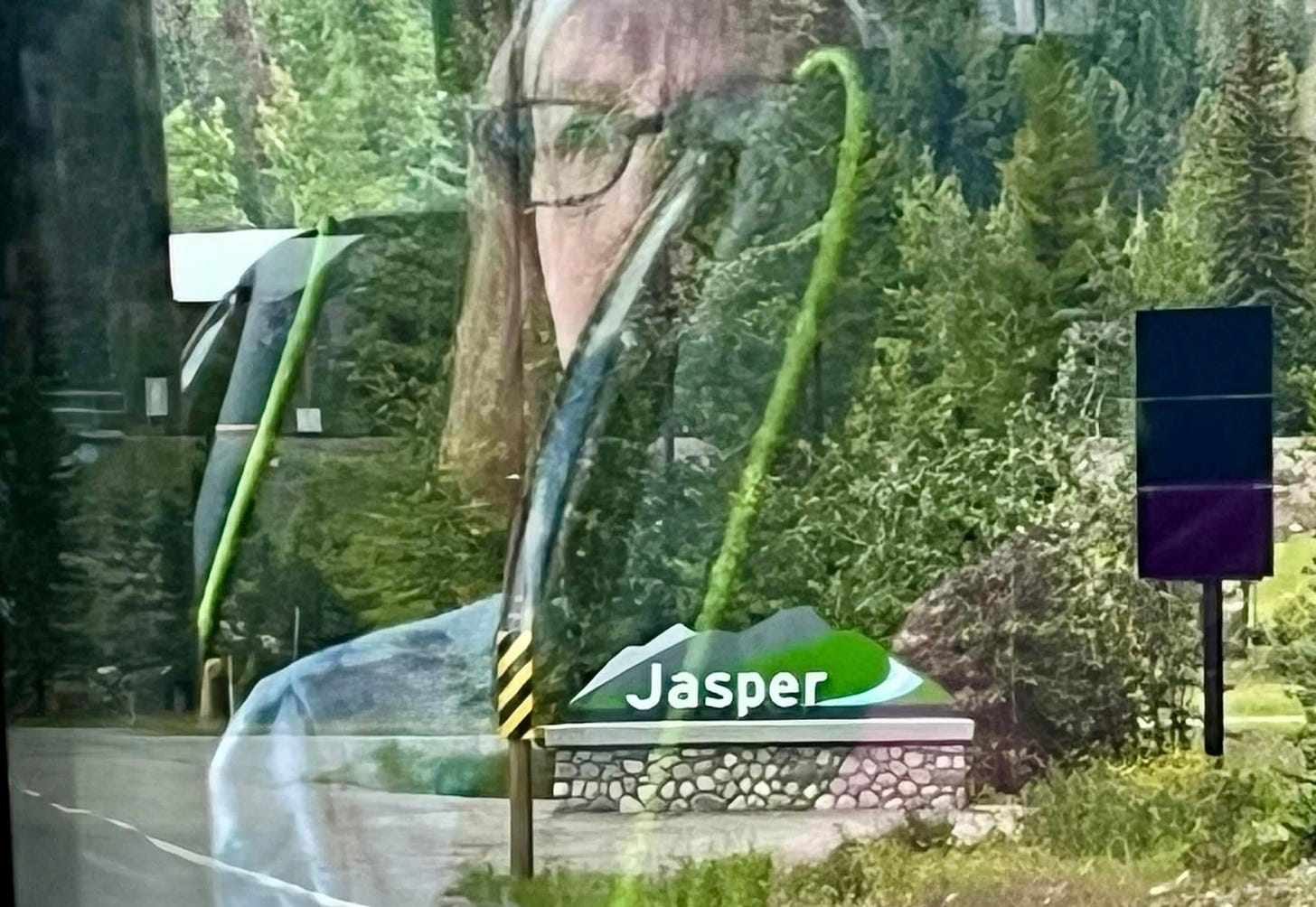


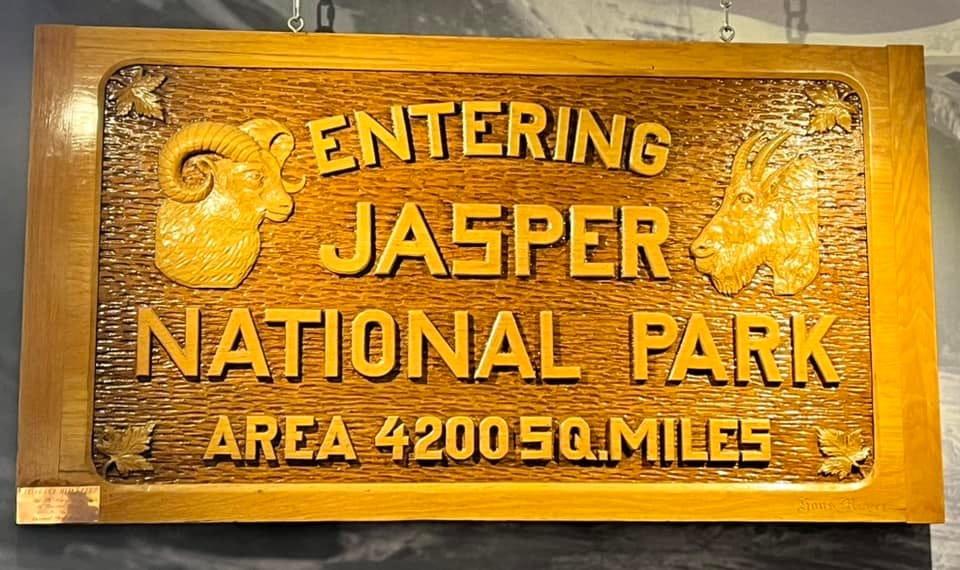
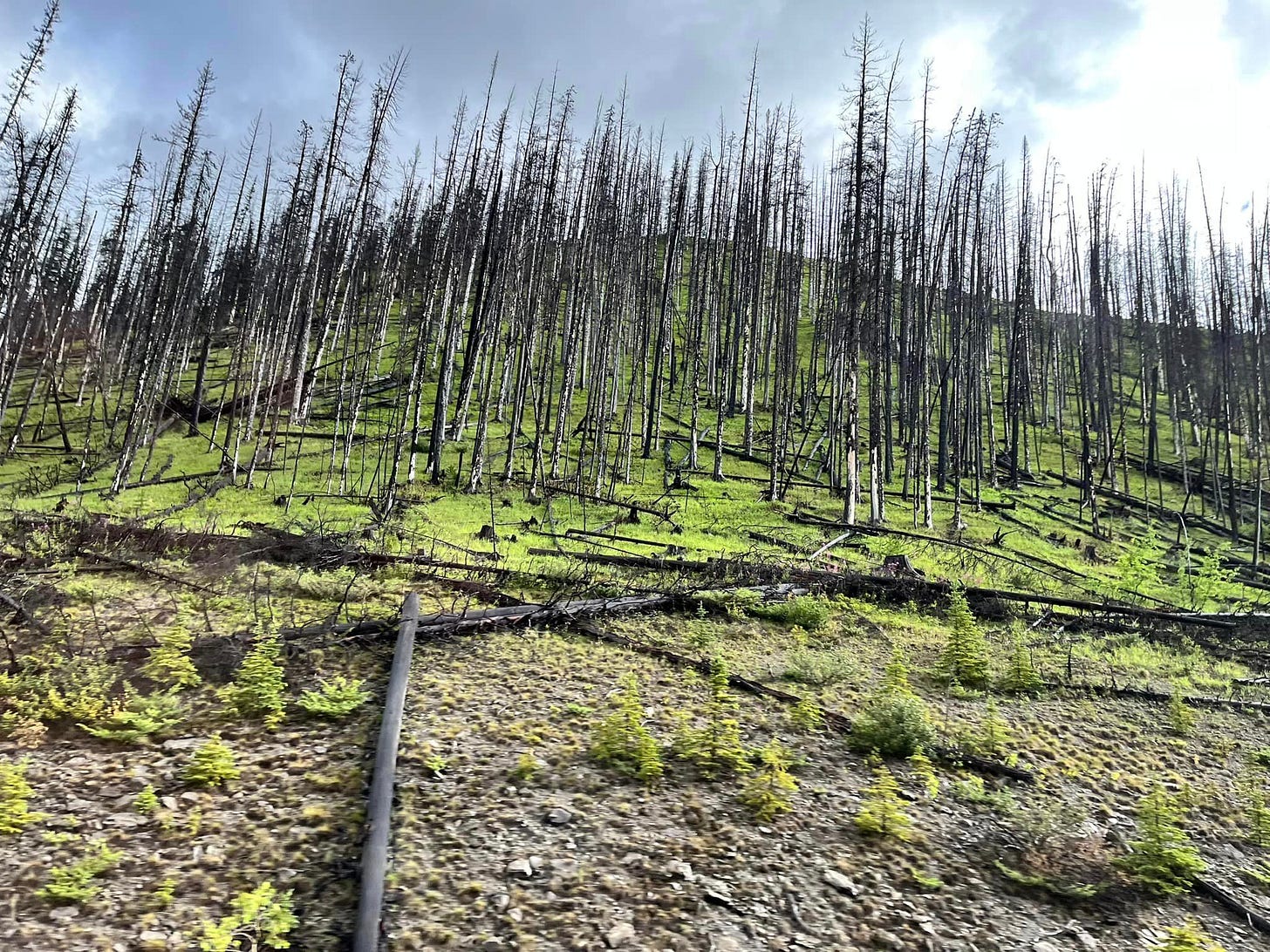
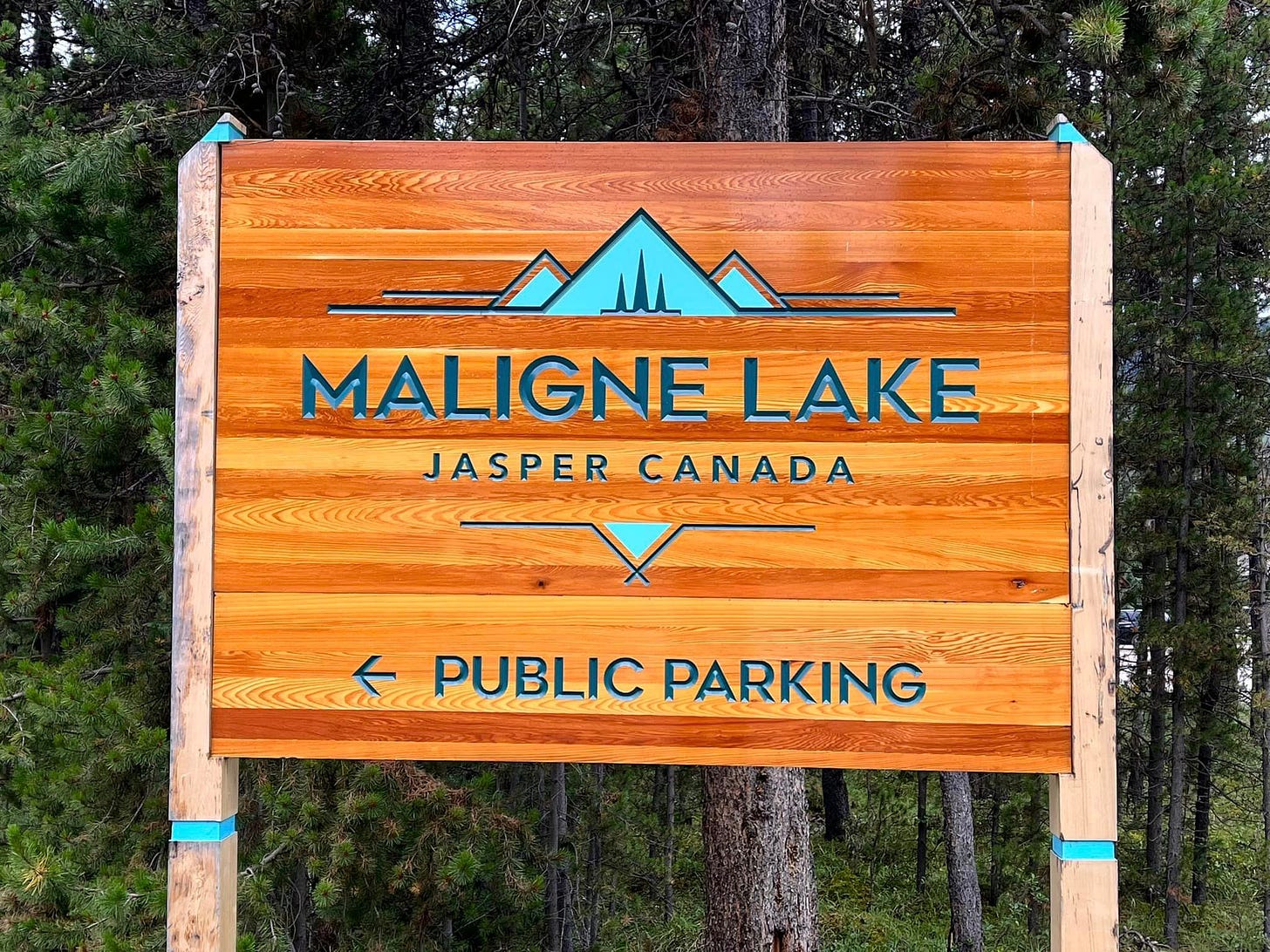
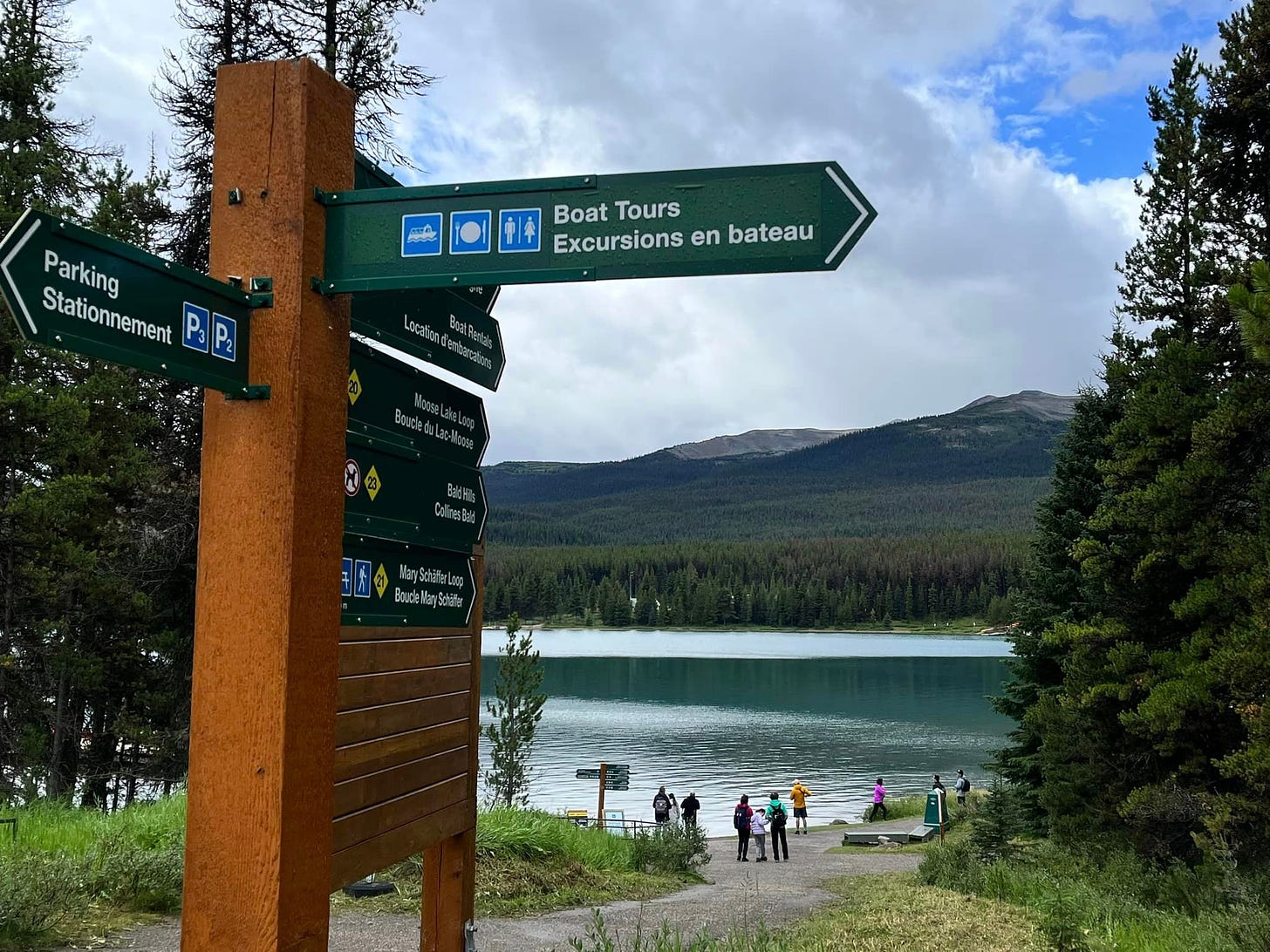
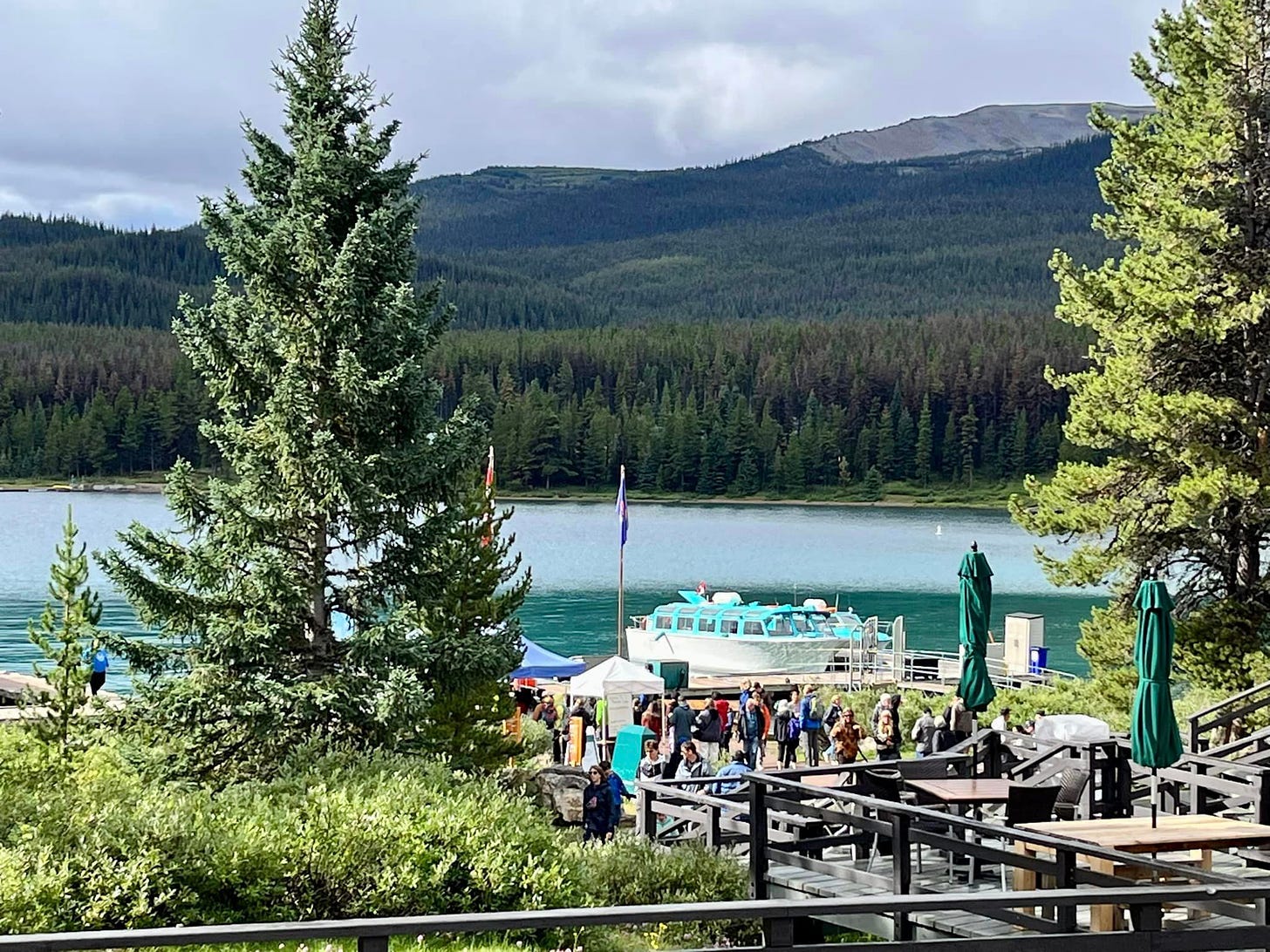
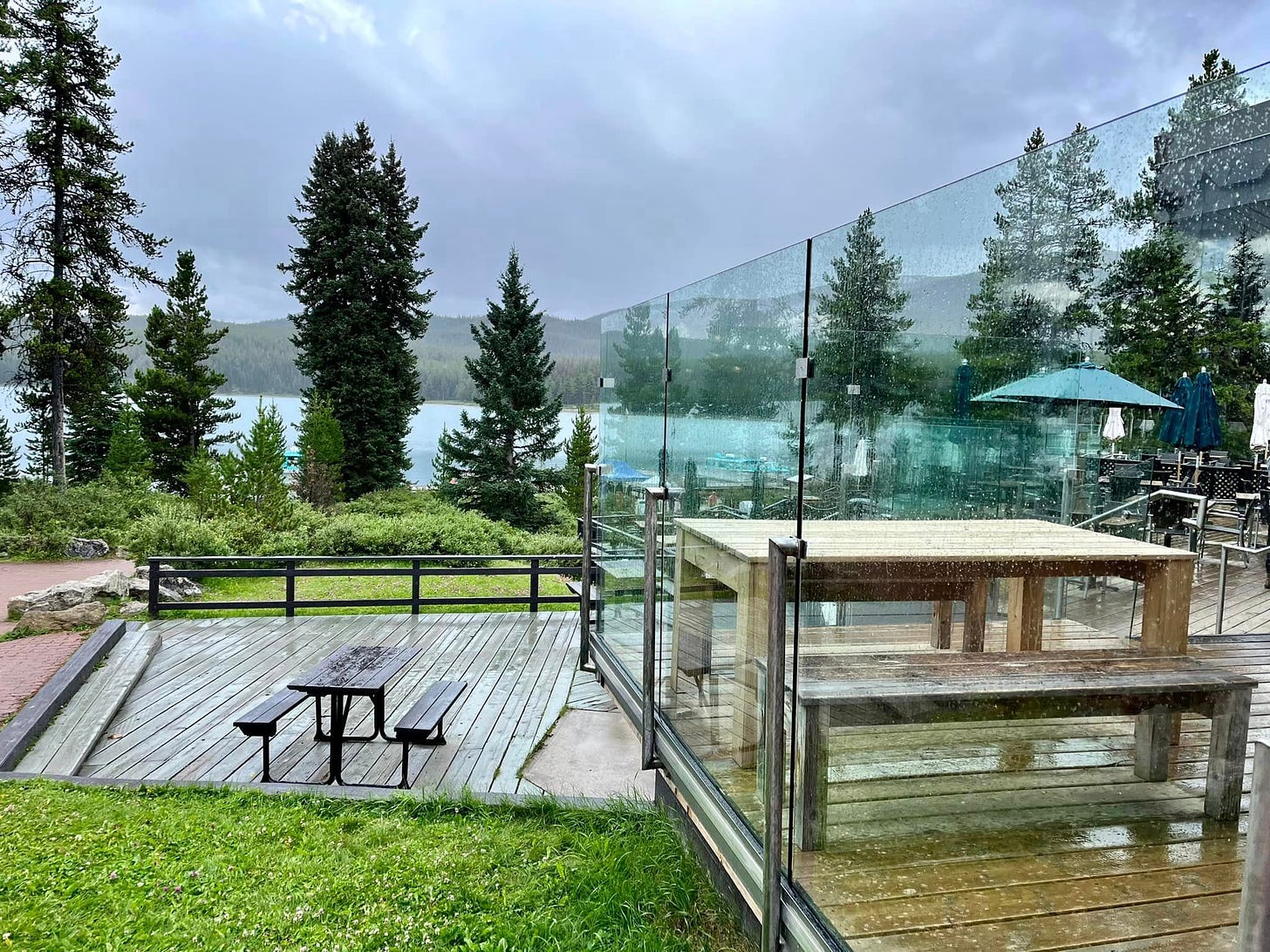
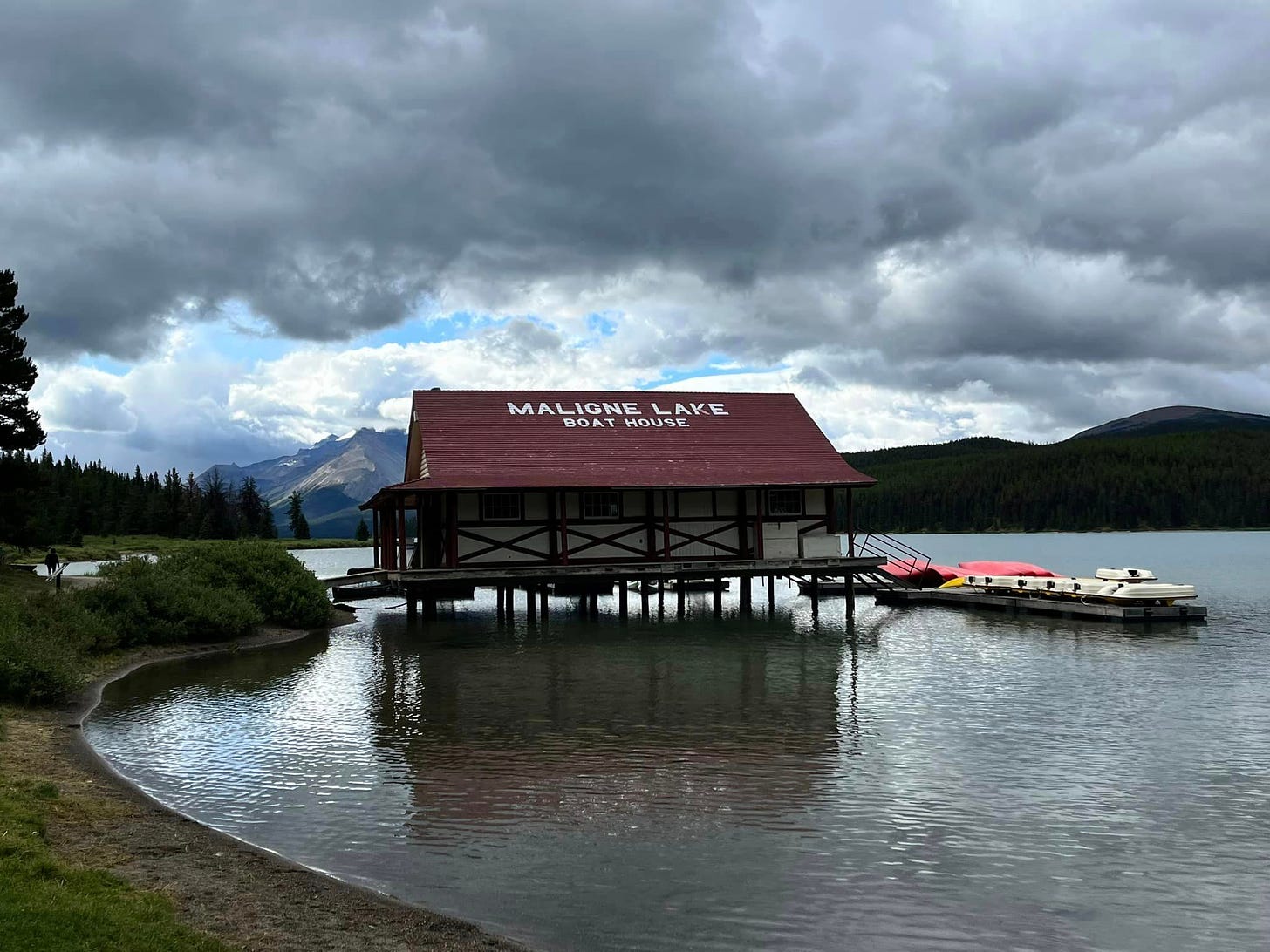

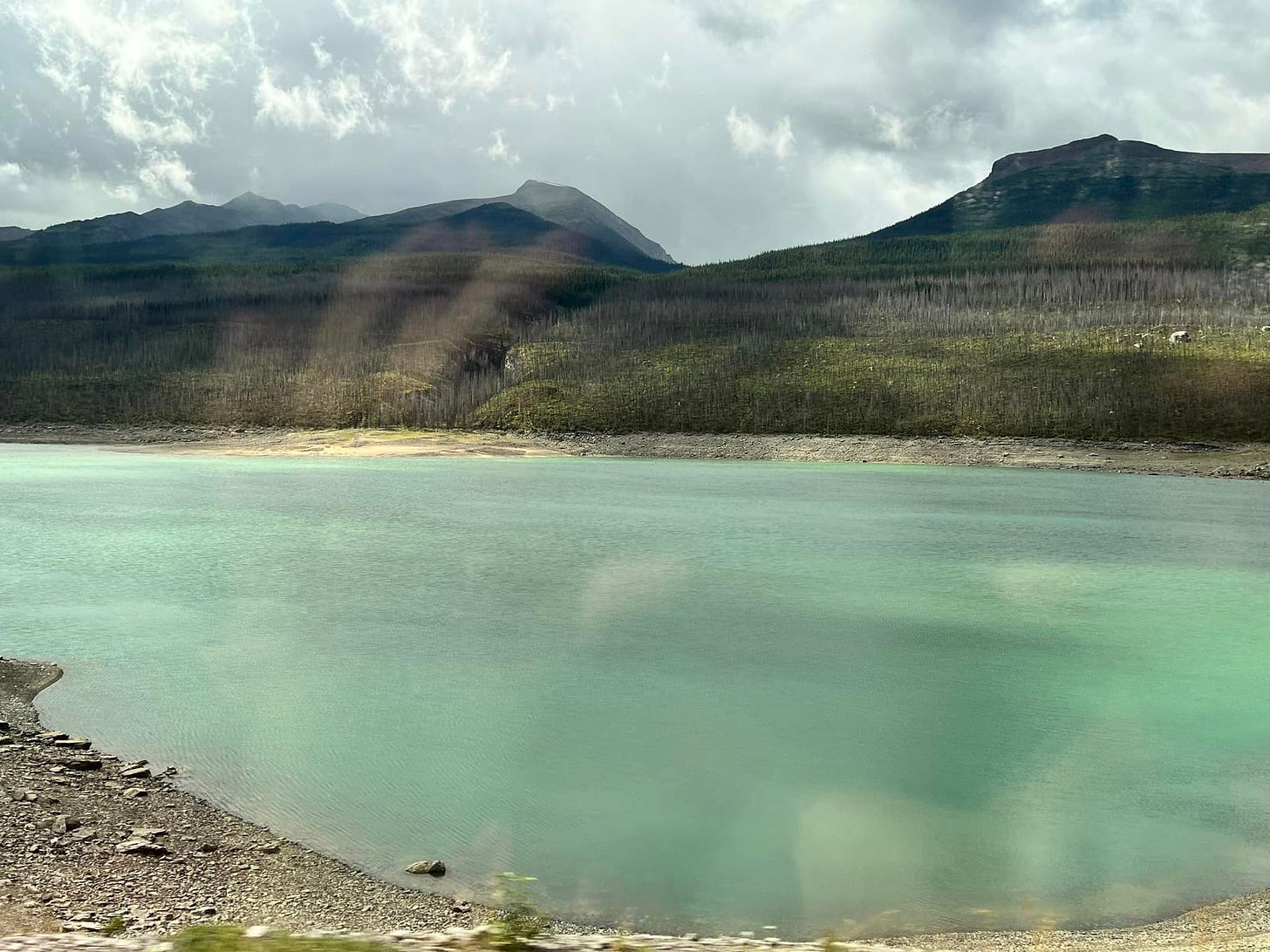
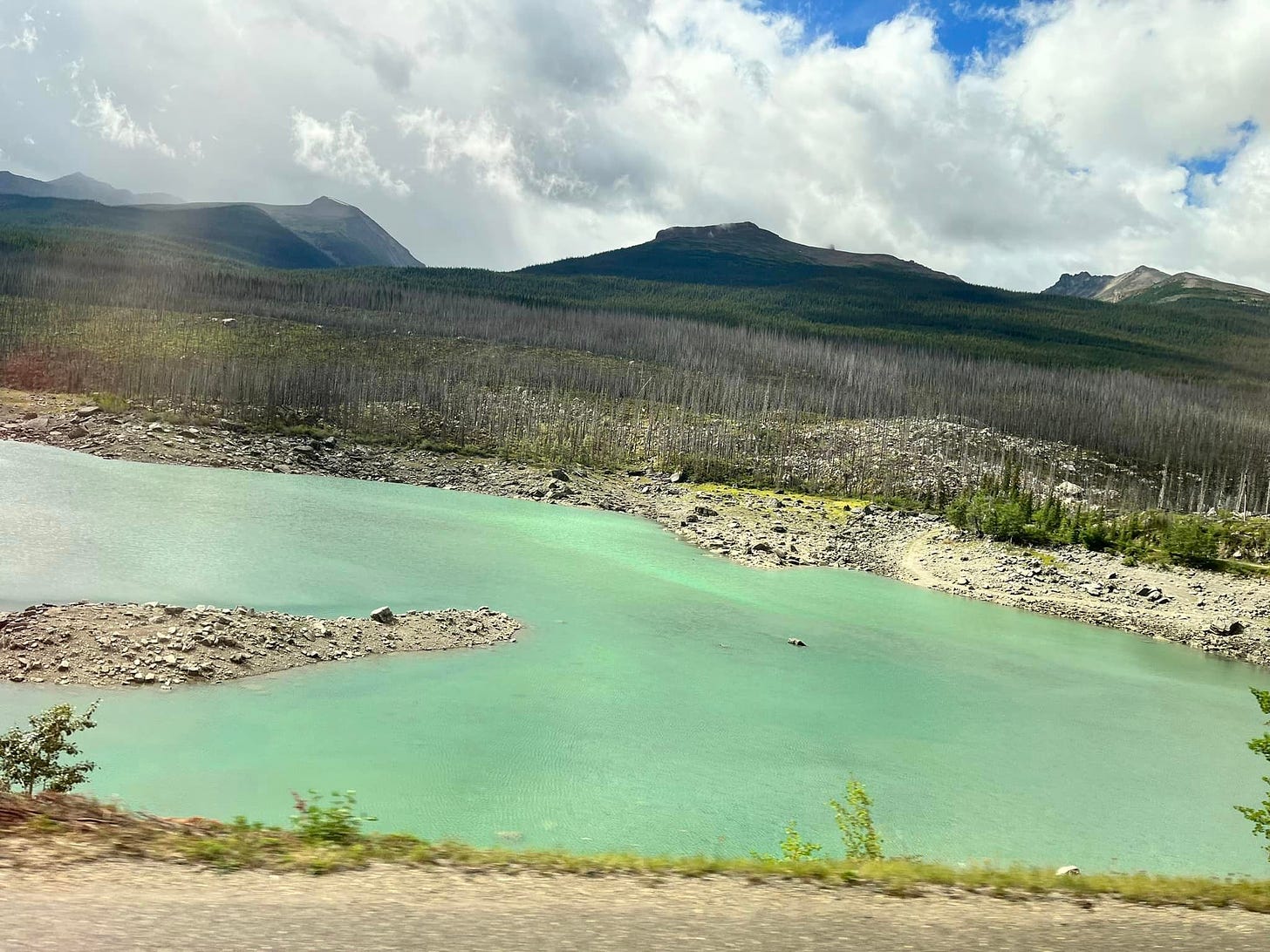

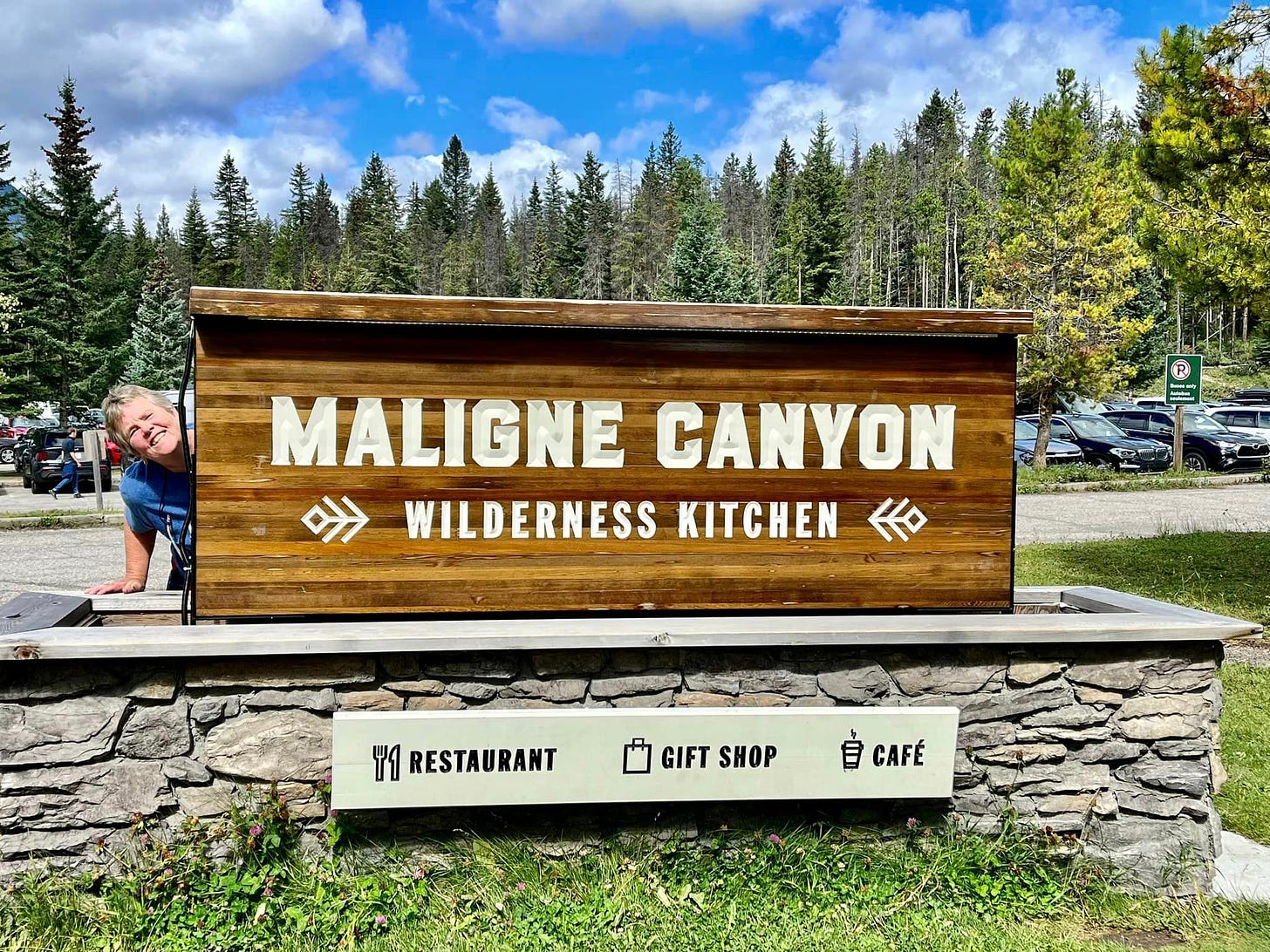
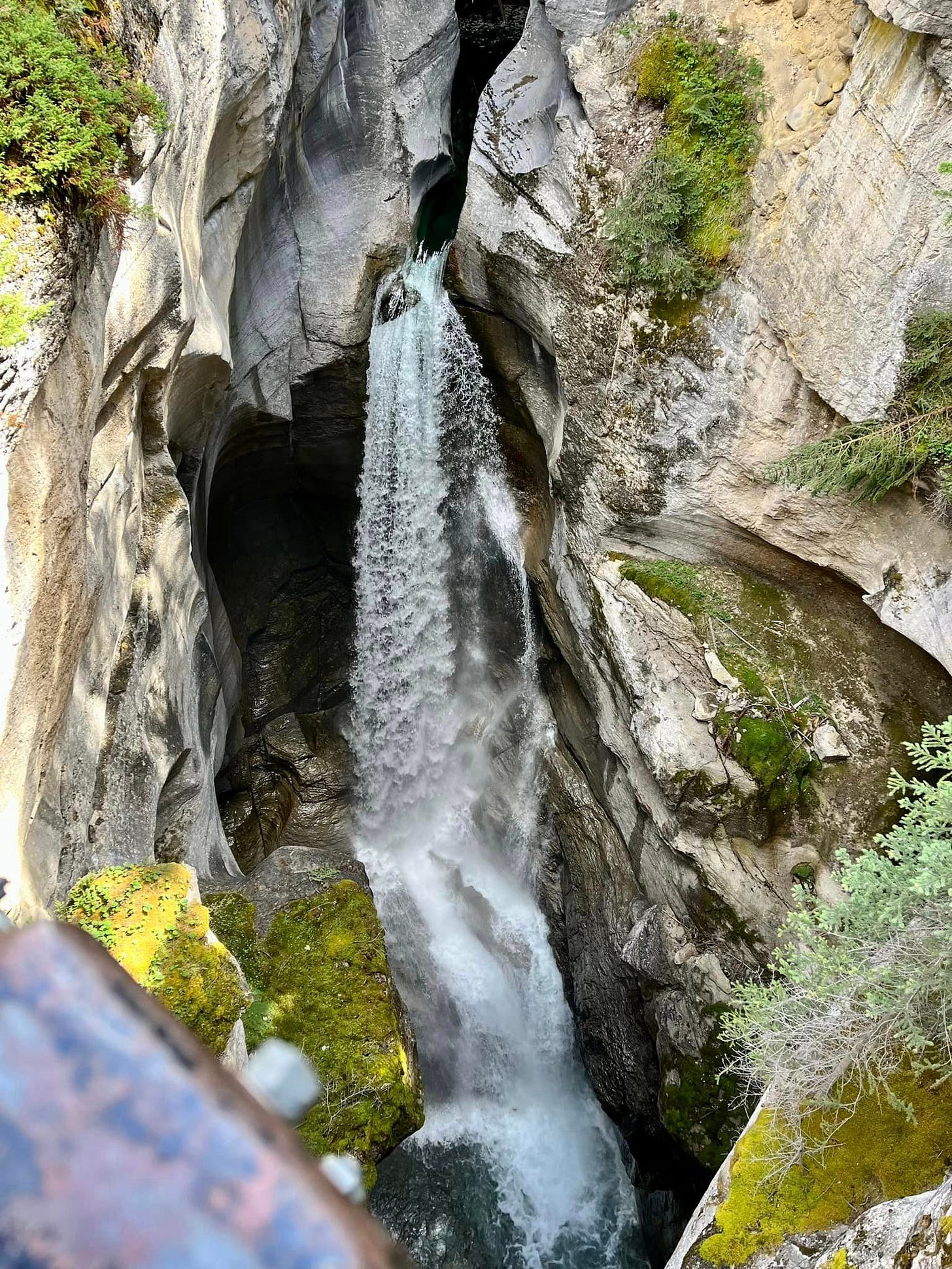
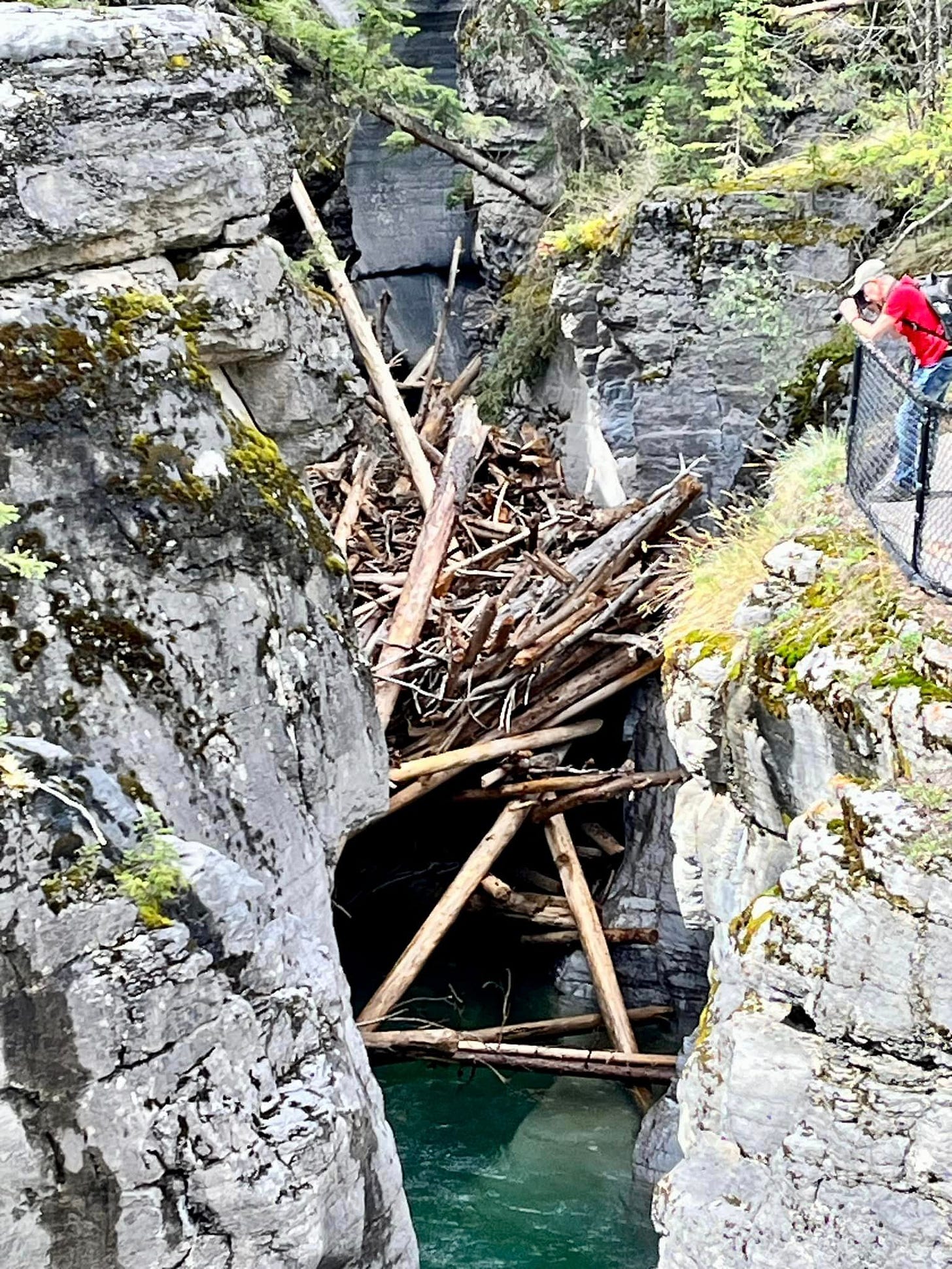
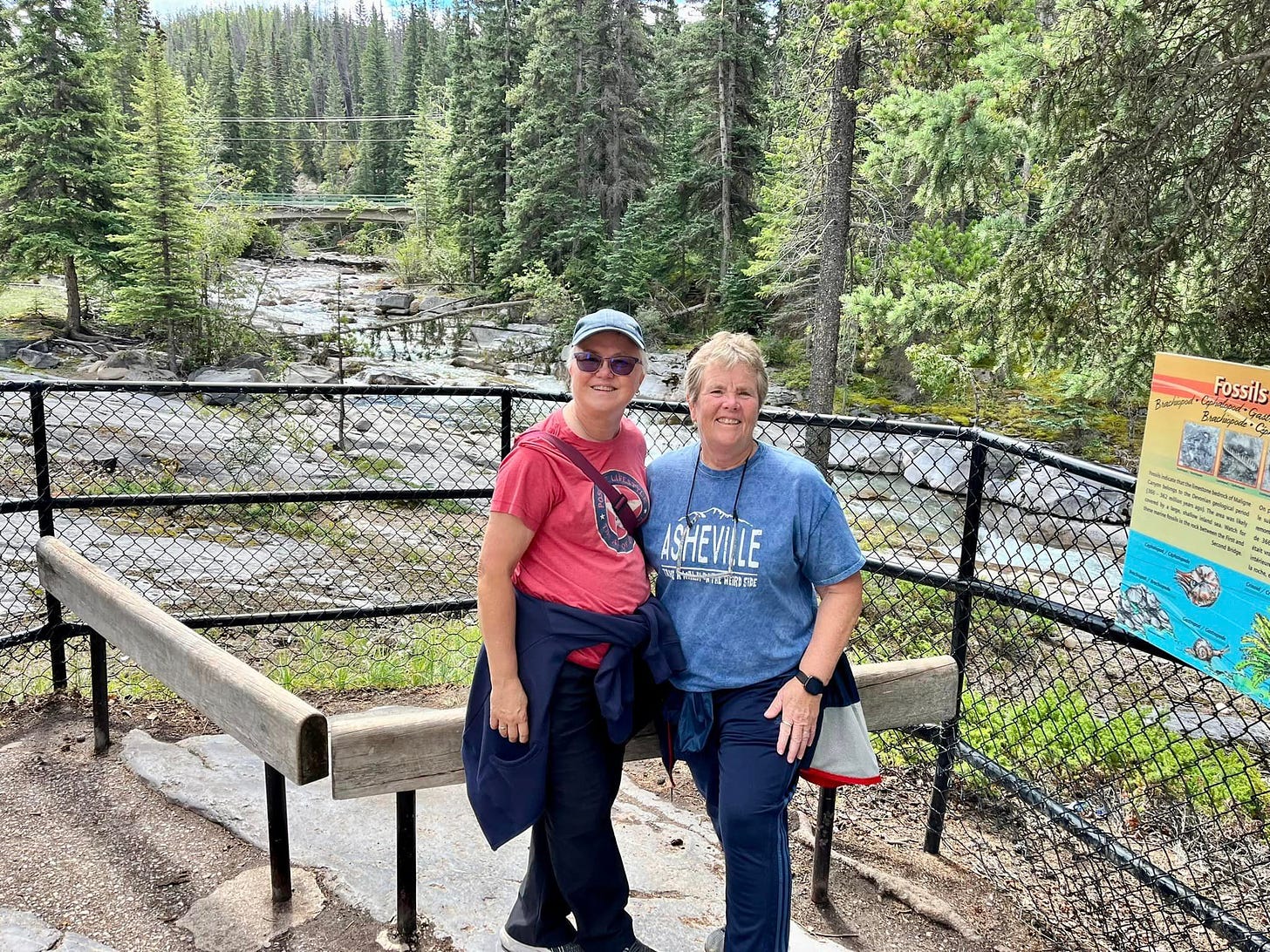

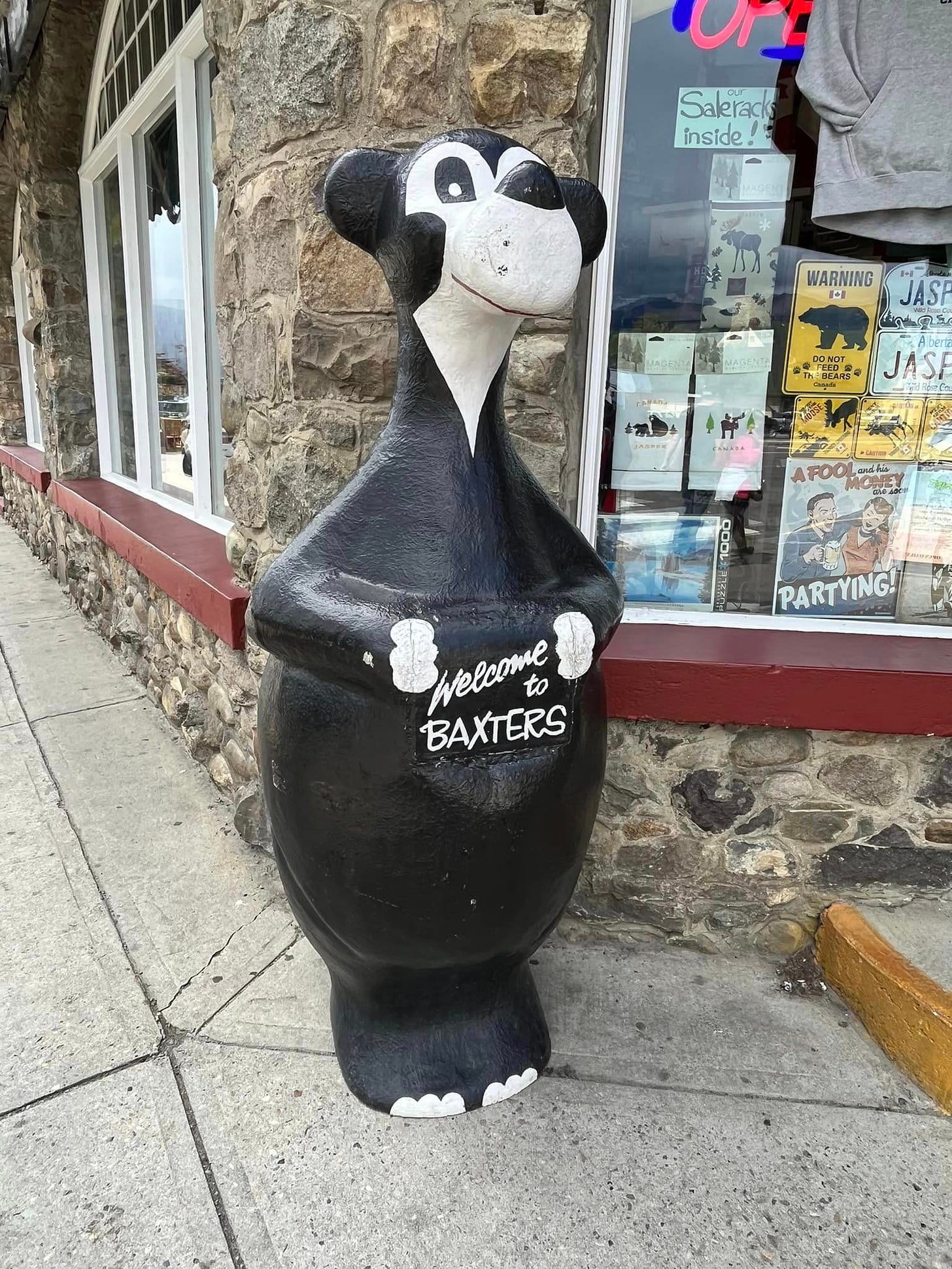
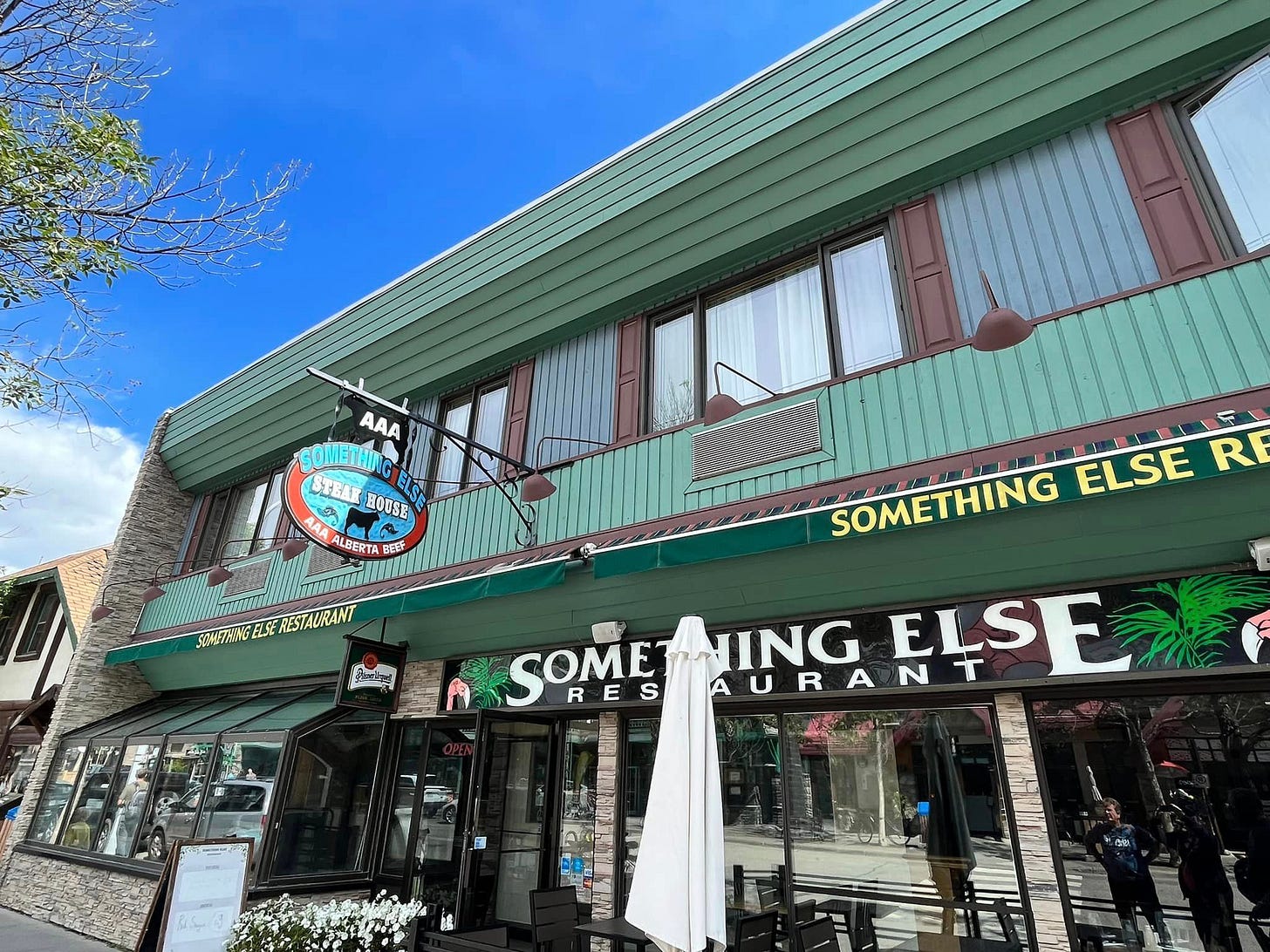
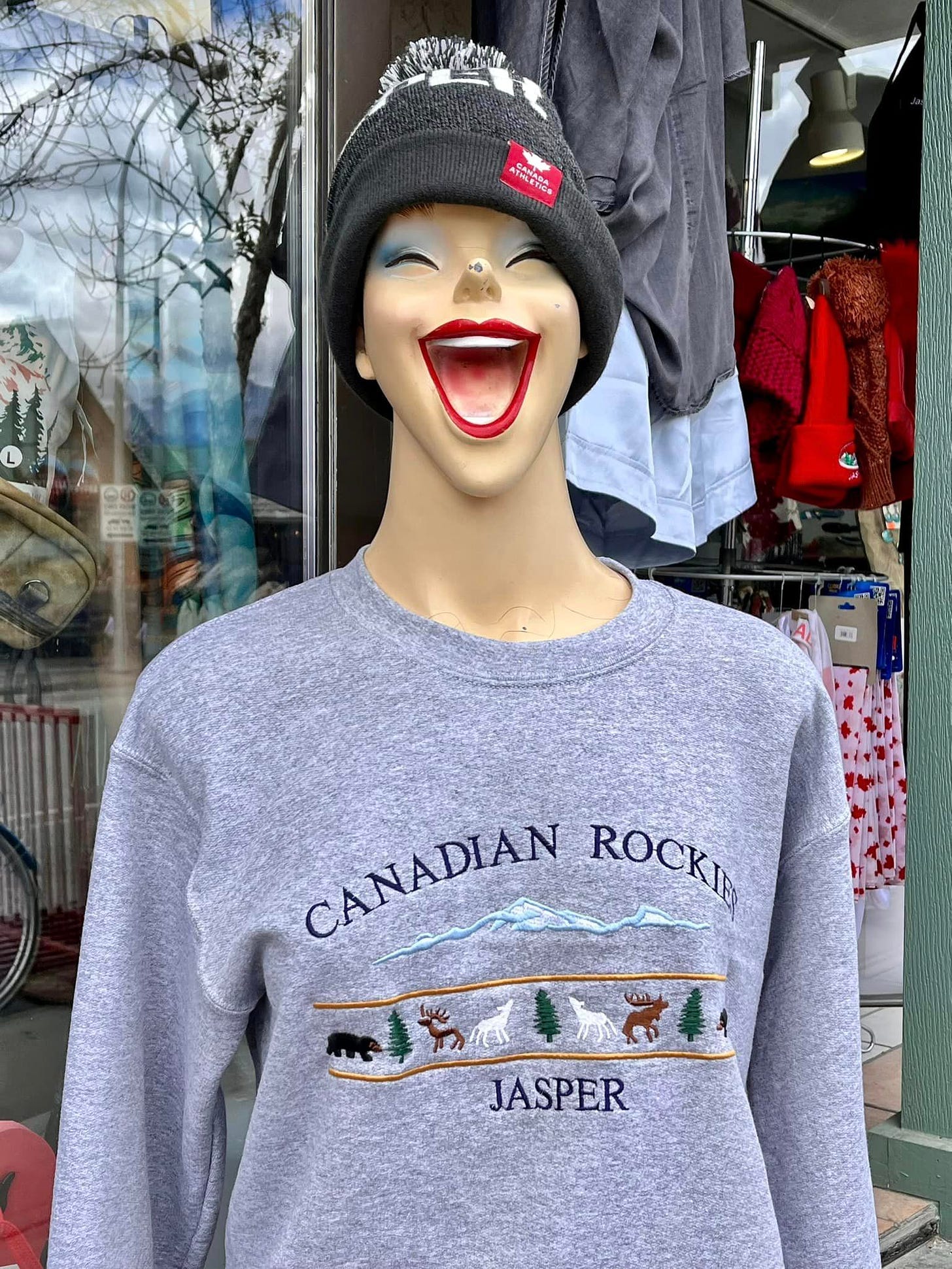
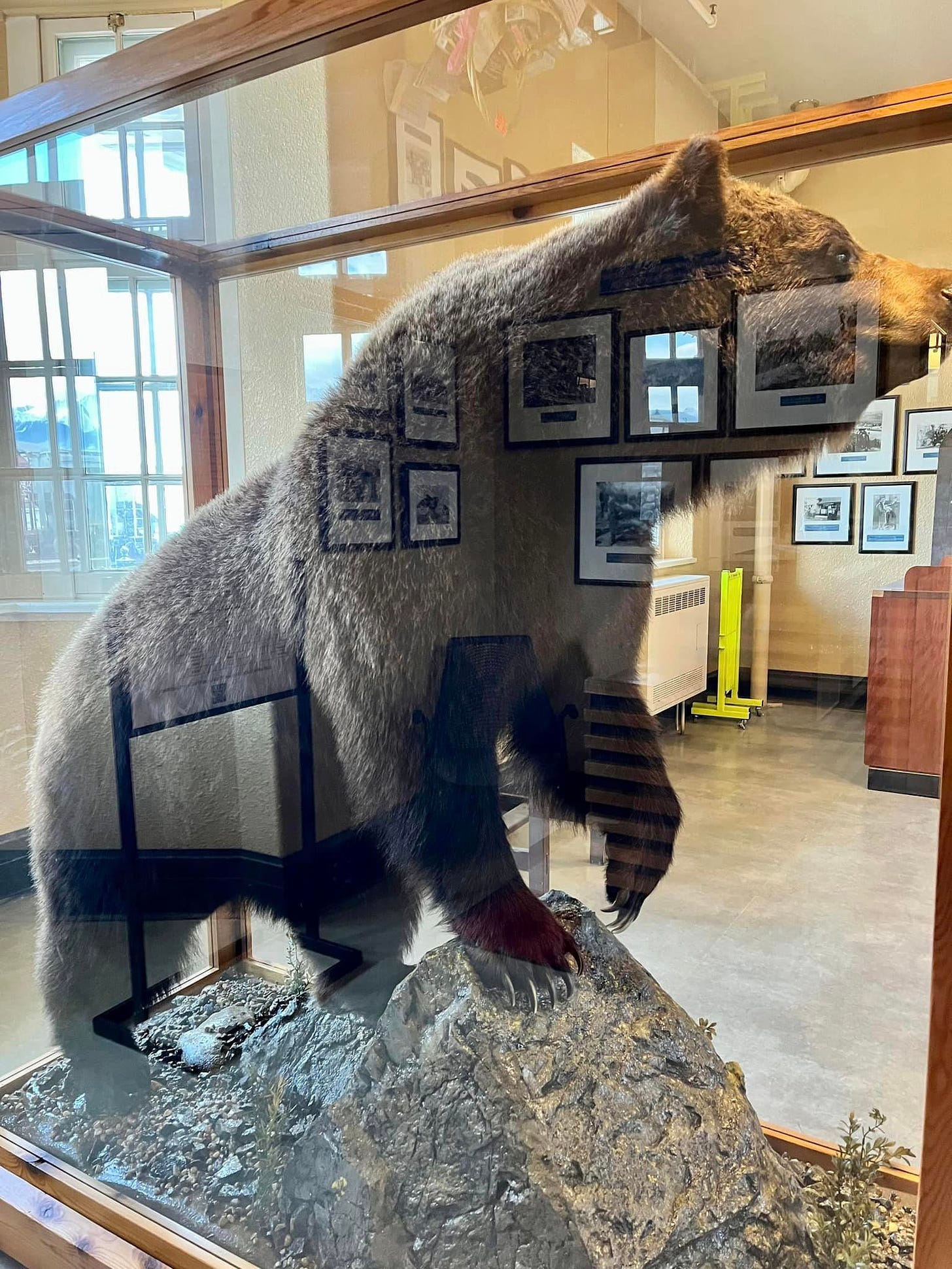

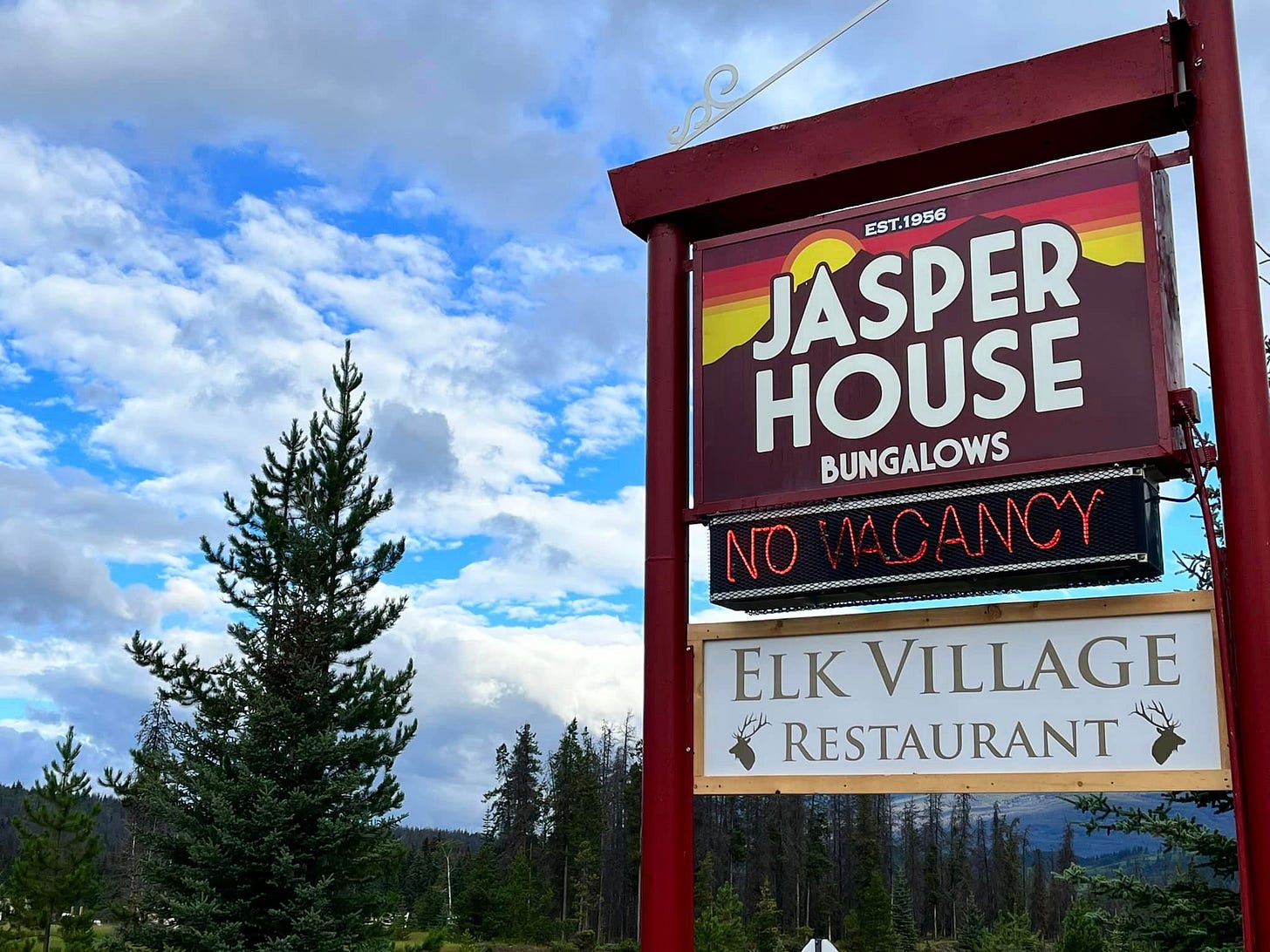
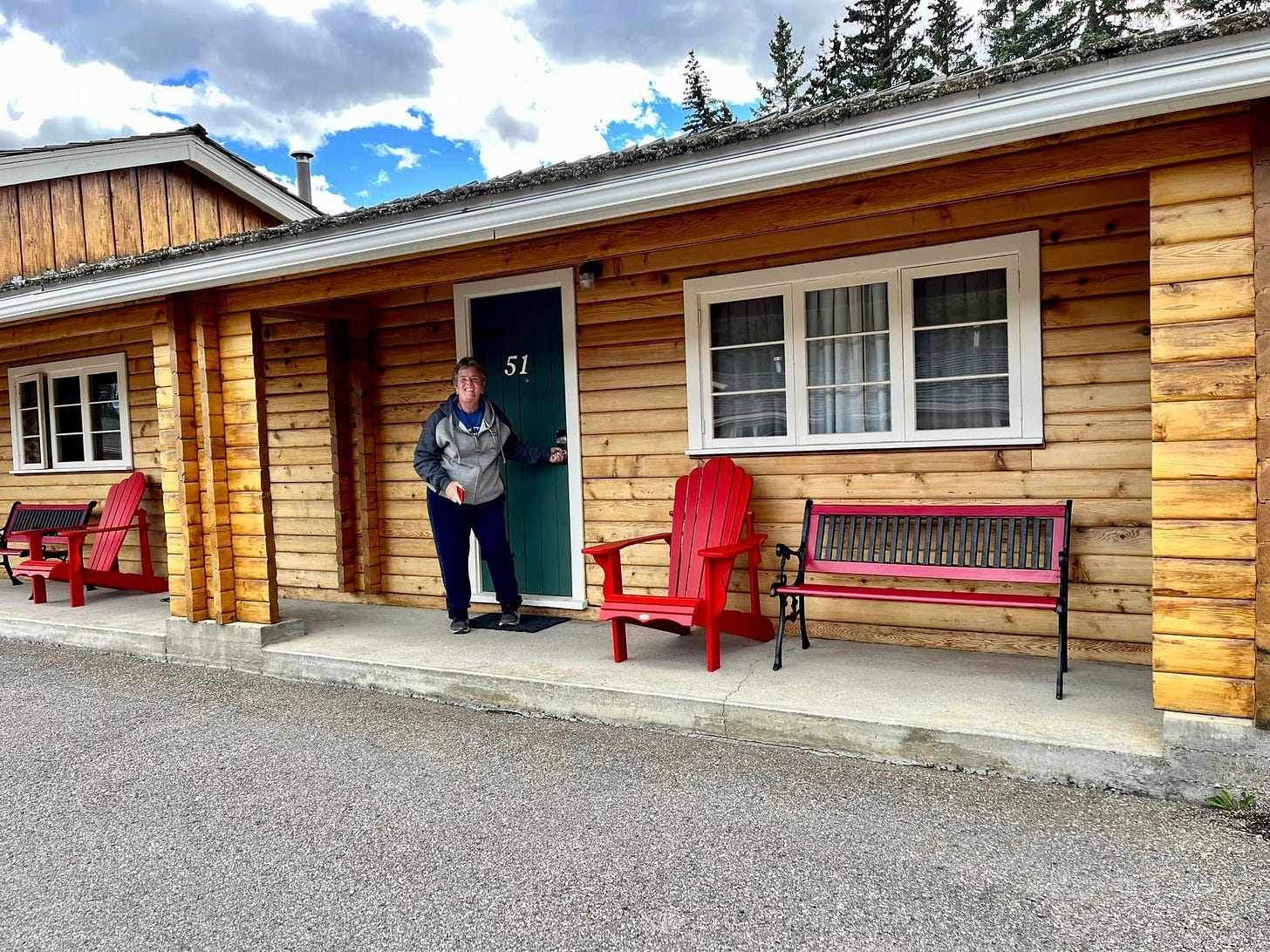
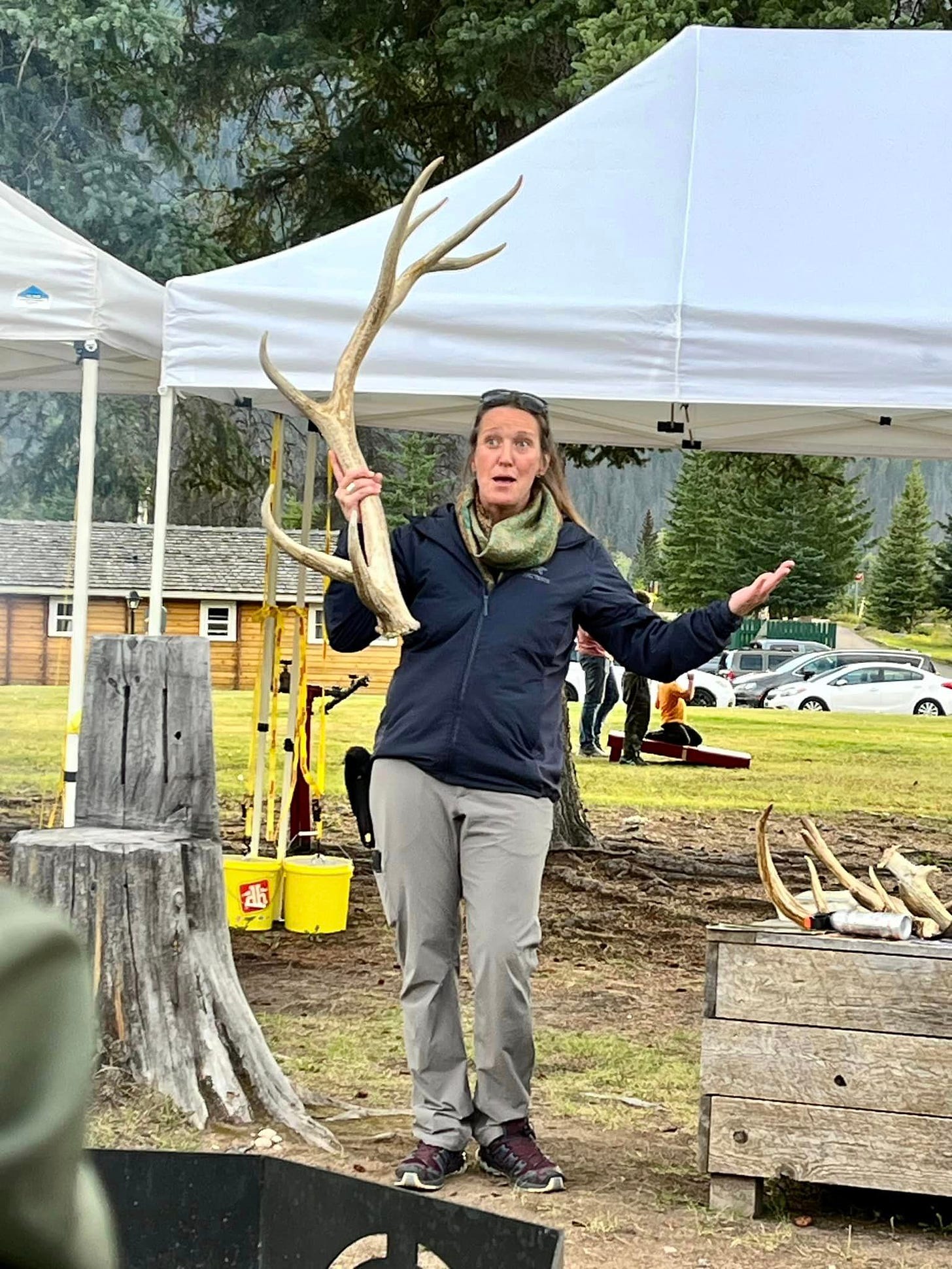

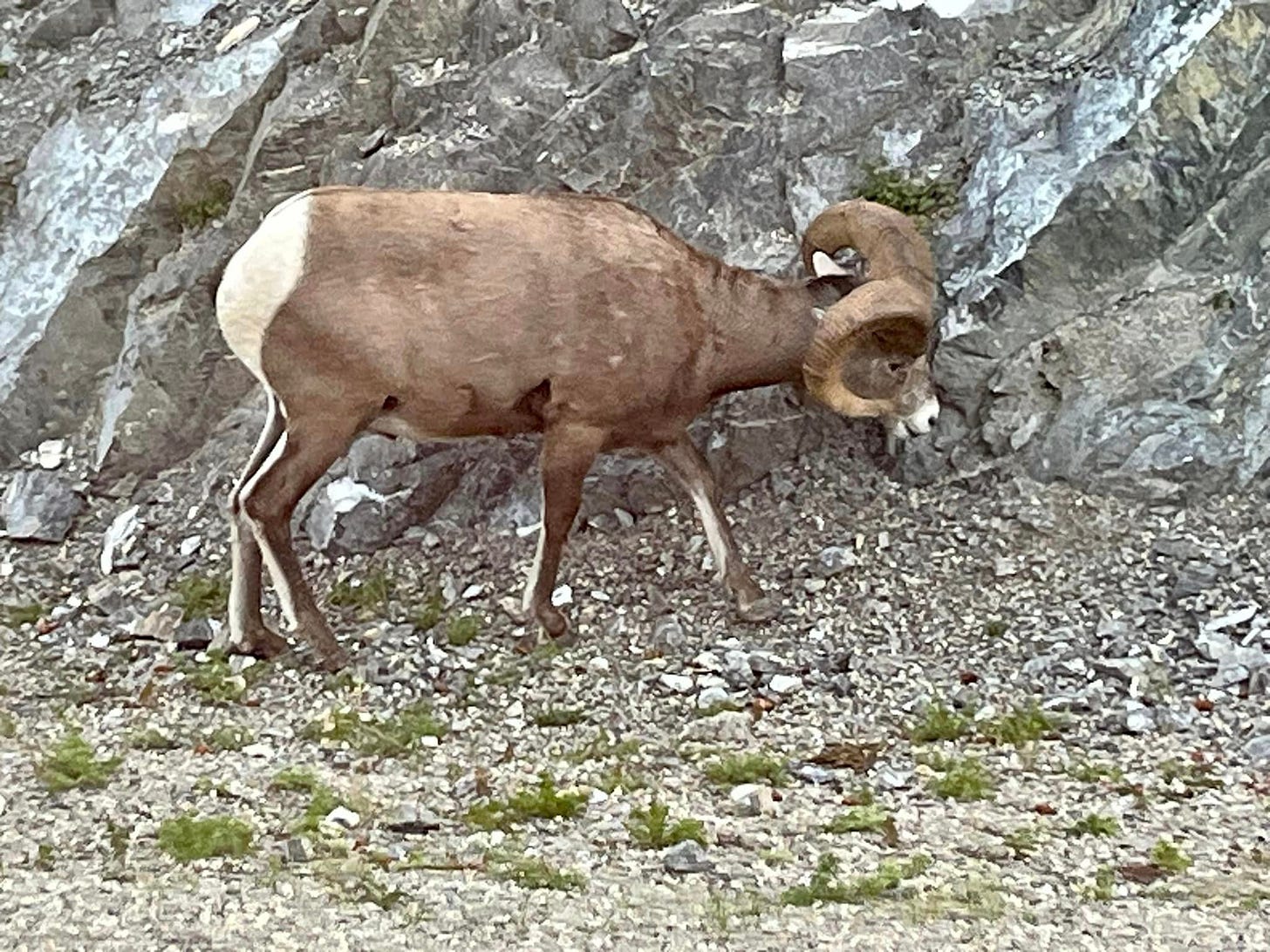
I didn't know about the sink holes in Medicine Lake and how they feed into the tunnels and canyon. What a beautiful waterfall! The velvet dropping from the bull's antlers is a great photo, too. When they are in rut like that, they are dangerous creatures. No direct eye contact!
Lovely! Sounds like a wonderful trip!